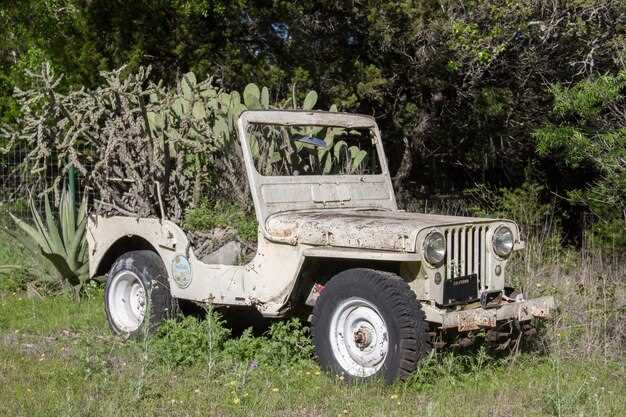The story behind the original Willys Jeep


During World War II, the need for a versatile and durable military vehicle led to the creation of the iconic Willys Jeep. This all-terrain vehicle not only revolutionized military transportation but also became a symbol of American engineering and ingenuity. The Willys Jeep was designed to navigate rough terrains, carry troops, and transport supplies, which made it an indispensable asset on the battlefields of WWII.
The origins of the Willys Jeep can be traced back to a government request for a lightweight, four-wheel-drive reconnaissance vehicle. In 1940, the U.S. Army issued specifications that became a blueprint for automotive manufacturers. Willys-Overland Motors responded to this challenge by developing a prototype known as the MB model. This vehicle combined functionality, reliability, and simplicity, setting the standard for military transport.
The impact of the Willys Jeep extended far beyond its immediate military applications. Employed by allied forces in various theaters of war, the Jeep became synonymous with freedom and mobility. After WWII, the vehicle transitioned into civilian markets, influencing the design of recreational off-road vehicles and establishing a legacy that continues to this day. Its rugged nature and adaptability have made it a beloved choice among enthusiasts and adventurers.
Military Specifications and Design Features of the Willys Jeep
The Willys Jeep, officially known as the Willys MB, was developed during World War II to meet specific military requirements. Designed for versatility and adaptability, it quickly became an invaluable asset for the United States Armed Forces. One of the primary military specifications was the weight limit of no more than 1,300 pounds, which ensured maneuverability and transportability across diverse terrains.
One of the standout features of the Willys Jeep was its four-wheel drive system, which provided superior traction on rugged landscapes. This capability was crucial for military operations, particularly in challenging environments like mud, sand, and snow. The Jeep’s high ground clearance and short wheelbase further enhanced its ability to navigate obstacles and rough trails.
The design included a robust construction with a frame made of high-strength steel, which allowed the vehicle to endure harsh conditions while carrying heavy loads. The Willys Jeep was powered by the 2.2-liter Go Devil engine, delivering 60 horsepower and enabling a top speed of around 65 miles per hour. This power-to-weight ratio made the Jeep agile and responsive in combat scenarios.
Lightweight and compact, the Willys featured a simple, functional design, with removable rear seats to accommodate various military configurations. The vehicle’s open body design facilitated ease of access for troops and cargo, which was vital in battlefield situations. Additionally, the flat fenders and sloped hood design contributed to improved visibility for the driver.
Moreover, the Willys Jeep was equipped with a 3-speed manual transmission, allowing for efficient gear shifting and control. The vehicle’s braking system utilized both drum brakes and handbrake features, ensuring reliable stopping power under various conditions. Rugged axles and heavy-duty suspension components further solidified its reputation as a reliable military transport.
Overall, the Willys Jeep embodied the essential qualities of military design: durability, practicality, and efficiency. Its specifications and innovative features set standards for future military vehicles, establishing a legacy that continues to influence military transport design to this day.
The Role of Willys Jeep in World War II Combat Operations

The Willys Jeep, officially known as the MB model, became an essential vehicle for Allied forces during WWII. Its design was characterized by versatility, durability, and reliability, making it suitable for various combat scenarios. With a lightweight, all-terrain capability, the Jeep could operate in diverse environments, from muddy battlefields to rocky terrain.
Introduced to military service in 1941, the Jeep quickly gained a reputation for its ability to transport troops, equipment, and supplies efficiently. It could accommodate a crew of up to four soldiers, along with their gear, allowing for rapid deployment to frontline positions. With a top speed of around 65 mph and a range of approximately 300 miles, the Jeep facilitated swift tactical movements, crucial in fast-paced combat situations.
The Willys Jeep also played a pivotal role in reconnaissance missions. Its compact size and low profile made it ideal for scouting enemy positions without detection. Regularly employed by officers and reconnaissance units, the Jeep provided vital intelligence that shaped operational strategies on the battlefield.
Moreover, the versatility of the Willys Jeep extended beyond transportation. It served as a platform for various mounts, including machine guns and radio equipment, transforming it into a mobile command center. This adaptability allowed ground forces to respond dynamically to evolving battlefield conditions, enhancing overall combat effectiveness.
The significance of the Willys Jeep was further underscored by its production volume, with over 640,000 units manufactured for military use during the war. Its widespread deployment across multiple theaters of operations, including Europe, North Africa, and the Pacific, exemplified its impact on Allied victories. The Jeep’s role in WWII not only contributed to military success but also solidified its status as an iconic symbol of American ingenuity and resilience.
Legacy of the Willys Jeep in Post-War Automotive Innovation

The Willys Jeep, initially designed for military use during World War II, played a pivotal role in shaping the post-war automotive landscape. Its design and functionality influenced various sectors, leading to a range of innovations and adaptations in the automotive industry.
In the immediate aftermath of the war, the Willys Jeep became a symbol of ruggedness and versatility. This period saw the vehicle’s transition from military use to civilian markets, which laid the groundwork for several automotive innovations:
- Adaptability: The Willys Jeep exemplified adaptability, inspiring manufacturers to create vehicles suitable for diverse terrains and purposes. Its 4×4 capabilities laid the foundation for the development of off-road and utility vehicles.
- Design Principles: The minimalist design of the Willys Jeep led to a focus on functionality over luxury. This principle influenced a generation of vehicles, promoting practicality and durability, which became essential features in many post-war models.
- Modular Features: The Jeep’s interchangeable parts concept led to advancements in modularity in automotive design. This encouraged manufacturers to produce vehicles that were easier to maintain and customize.
Furthermore, the Willys Jeep’s popularity among civilians stimulated the growth of a new segment in the automotive market, mainly focused on recreational and adventure vehicles. This evolution gave rise to:
- Adventure Vehicles: The foundations laid by the Willys Jeep led to the emergence of a variety of adventure-oriented vehicles, which catered to outdoor enthusiasts.
- SUV Development: The characteristics that defined the Willys Jeep influenced the SUV segment, which began to thrive in the following decades. The demand for multi-purpose vehicles saw significant growth, with the Jeep brand leading the way.
The legacy of the Willys Jeep continues to resonate today. It not only forged a path for future automotive innovations but also established a cultural icon of freedom and exploration. The profound influence of this remarkable vehicle on subsequent automotive designs and market trends underscores the Willys Jeep’s enduring impact on the industry.
